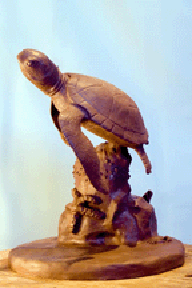
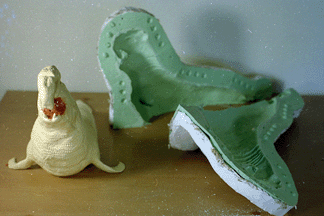
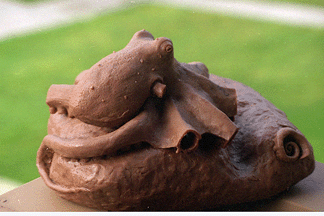
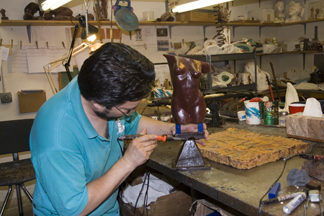
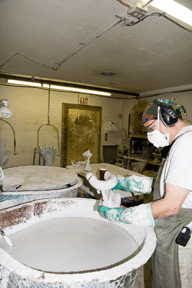
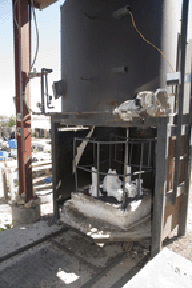
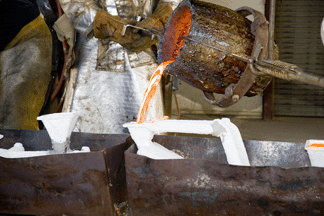
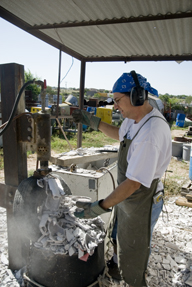
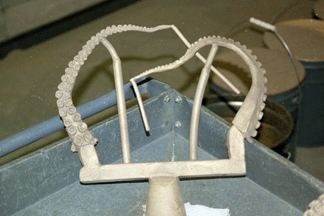
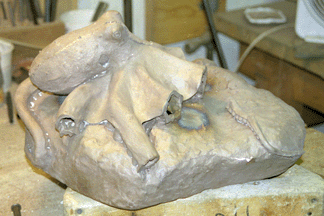
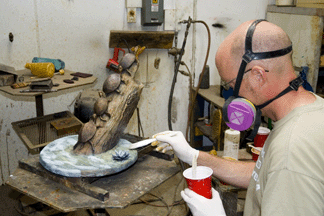
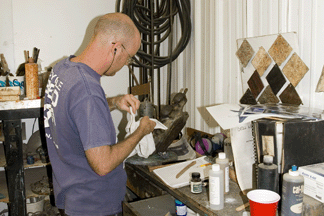
|
John H. Stewart |
|
|
||||||||
| Home | Sculpture | Photographs | Galleries | Statement | Commissions | The Artist | New works in Progress | Contact Us |
|
Lost Wax Casting Creating an
artwork in bronze is a time consuming process. If costs seem high, this
is due to the large number of hours necessary to create the work.
Despite new developments in mold making and casting technologies, these
processes remain labor intensive.
|
 |
First step: Creating the original sculpture using any of a variety of materials including: Clay, wax, wood, plaster, or even found objects. |
 |
Second step: Molding the original by enveloping the sculpture in latex /urethane or any number of materials to produce an exact copy of the piece. The original is removed from the mold, leaving an exact negative of the original. A large or complex sculpture may require being disassembled and multiple molds having to be made. |
 |
Third step: Making an exact copy in wax, by pouring molten wax into the mold for a specific amount of time, creating a 3/16 inch thick hollow shell of the original. This wax is then “dressed” meaning removed from the mold and re detailed, defects removed (such as mold seam lines voids, etc.) and depending upon the size the of the sculpture, either reassembled, or cut into various pieces for better casting. |
 |
Fourth step: Spruing the wax means creating channels (called gates) to the copy as well as a pouring spout. Everyplace there is wax will be replaced by bronze. |
 |
Fifth step: Creating a ceramic shell around the wax is done by repeated dipping into a slurry and coated with various grades of silica sand. Between each dip, the shell must dry (cure) completely before it can be coated again. This step usually takes a week to complete. |
 |
Sixth step: The wax is then burnt out of the shell, (hence the name lost wax process) creating a hollow ceramic shell mold. |
 |
Seventh step: Bronze casting is finally ready to take place. The ceramic shell is heated and immediately the molten bronze (1800-2100 degrees Fahrenheit) is poured into the shell. |
 |
Eighth step: Knock out - when the bronze has cooled the ceramic shell is then carefully knocked away, sandblasting may also be necessary to remove all traces of the shell. |
 |
Ninth step: Removal of the gates is done by using a plasma torch or grinding tool. |
 |
Tenth step: Welding and chasing the metal may now take place. At this time if the sculpture was cut into pieces (for easier casting) they are welded back together and all defects and welds are re-detailed (texture matched etc.) the sculpture is then sandblasted, and cleaned. |
 |
Eleventh step: Patination is the process where the bronze is heated and a variety of chemicals applied to color the sculpture. Varying strengths of chemicals and varying temperatures create subtle color changes to the sculpture. This step is quite an art in itself. |
 |
Twelfth step: Finishing the sculpture entails waxing the surface, or coating with metal lacquer to protect the patina from the elements, and mounting the sculpture on an appropriate base (plinth) for display. |
| With the labor and skill of many artisans, a fine art bronze is created to last more than a few lifetimes. |
|
West Bay Studios |